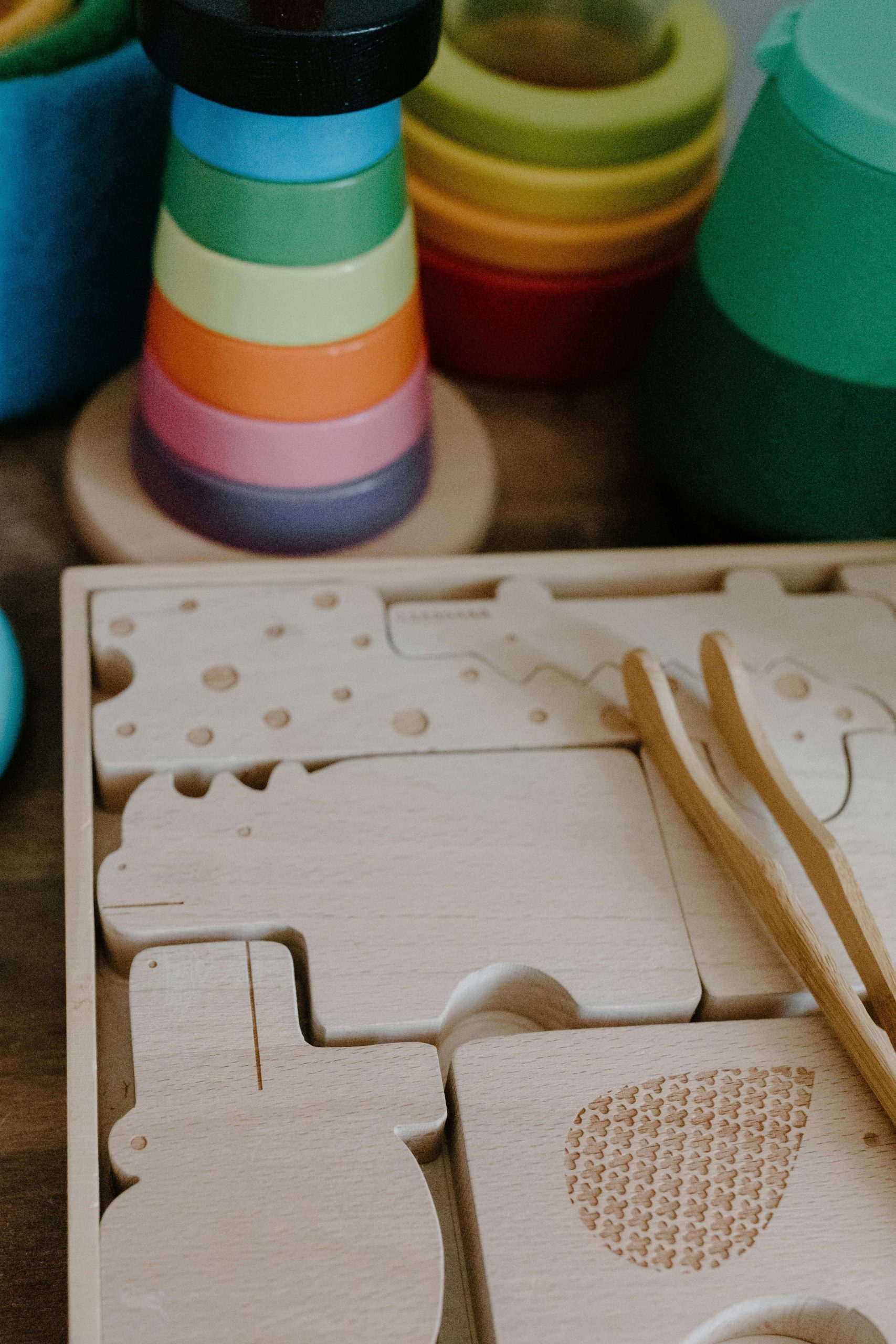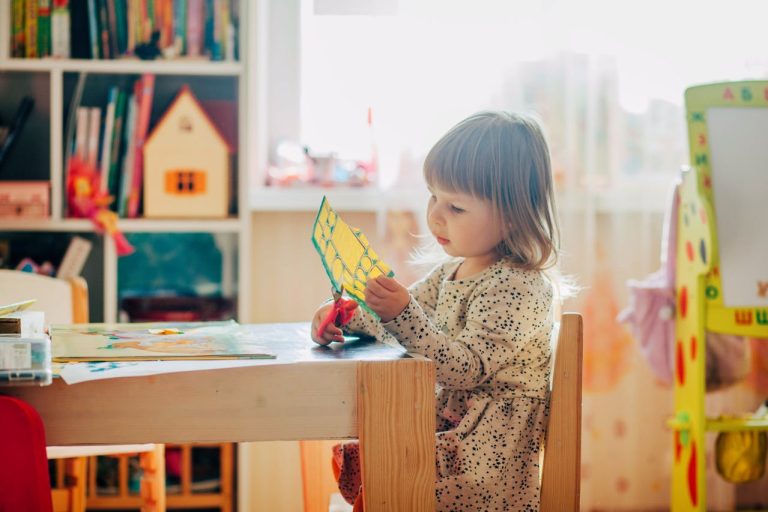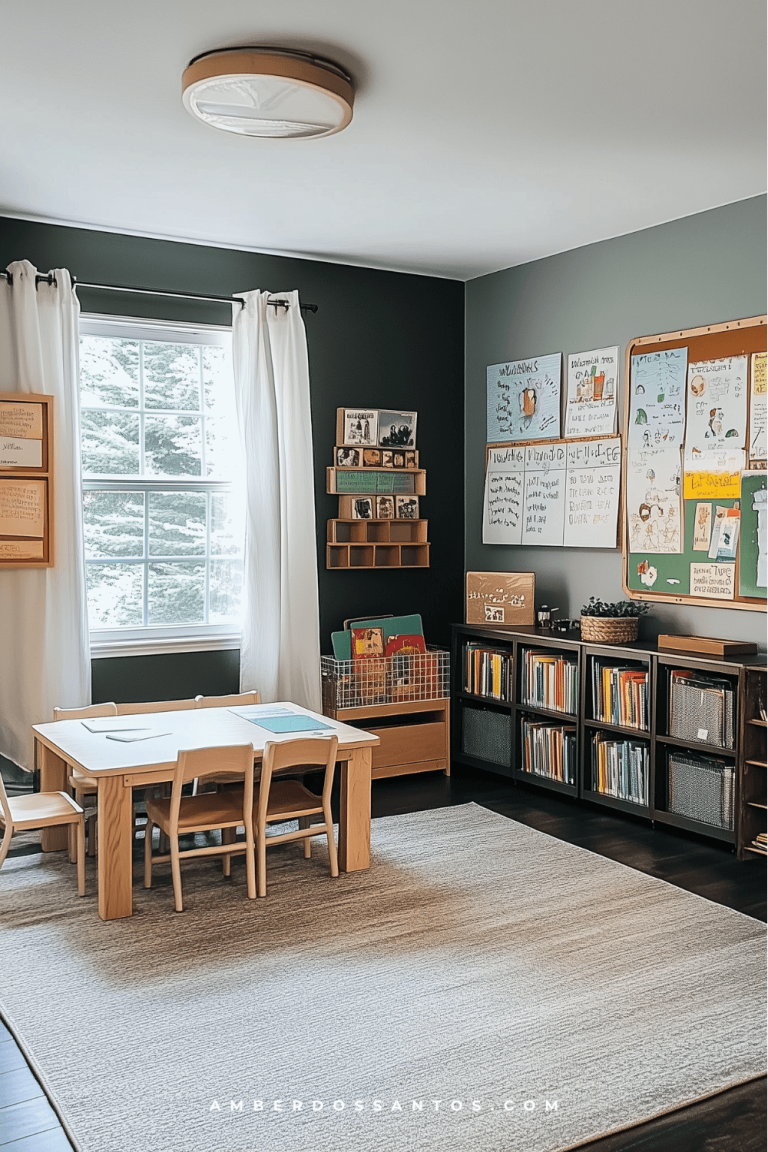29+ Must-Have Kindergarten Homeschool Supplies: What You Actually Need in 2026
This post shows you the best kindergarten homeschool supplies.
Looking for kindergarten homeschool supplies? Here’s an honest list of essentials for teaching your 5-6 year old at home, from one homeschool mom to another. Find out what you really need and what can wait.
When I first started homeschooling my kindergartener (new to homeschooling? Start here!), I felt overwhelmed by the countless “must-have” supply lists flooding my social media feeds. But after spending too much on fancy learning materials (some still unopened!), I discovered that your child can thrive with simple tools.
This carefully curated list includes affordable basics and key investment pieces that have truly earned their keep in our homeschool journey. You’ll find essential daily items—from reading materials to math manipulatives and writing supplies—most available on Amazon or possibly already in your home.

DISCLOSURE: Some of the links provided on this page are affiliate links. This means if you choose to make a purchase through these links, we may receive a small commission at no extra cost to you.
Before We Begin: Feed Your Homeschool Journey
Before diving into the kindergarten homeschool supplies list, let me share something that helped me immensely – great homeschool books. On tough days, these resources gave me the encouragement and wisdom to stay the course.
Check out my favorite homeschool reads here: https://amberdossantos.com/books-about-homeschooling
Now, let’s get into those essential supplies…
Daily Basic Kindergarten Homeschool Supplies (The Stuff We Actually Use Every Day)
Let’s start with the basics—the daily supplies you’ll reach for. These are the items that form the foundation of your homeschool experience.
After my first year, I discovered that the most used items in our homeschool weren’t flashy educational toys or elaborate learning systems. Instead, they were simple, reliable tools that supported our daily learning adventures.
Let’s start with the most important tool for staying organized and keeping it all together.
Smart Homeschool Planner Tools: Keeping Your Homeschool Journey On Track
I’ve tried several fancy (and expensive!) planners, I finally found the perfect solution – the Homeschool Lesson Planning Minimalist Notebook. Simple, straightforward, and exactly what I needed. This is my go-to planner:
The Homeschool Lesson Planning Minimalist Notebook by schoo...
This planner has everything you need without the extra fluff. The yearly overview helps me plan our big-picture goals, while the weekly layouts keep our daily lessons organized.
My favorite features are the field trip pages, which document our adventures, and the book list section, which tracks all the stories we read together.
A quick tip from experience: don’t feel pressured to fill out every planner section at once. I spend about 15 minutes each Sunday roughly planning our week but leave room for flexibility. Some of our best learning moments have come from following my child’s curiosity rather than sticking rigidly to the plan.
Now that we have our planning system let’s look at the essential writing tools you’ll use daily to bring those lesson plans to life.
Writing Tools That Work: The Only Pencils You’ll Need (Yes, Brand Matters!)
When I was new to homeschooling, I thought pencils were just pencils – until we wasted time and money on ones that constantly broke or left messy marks. Now I know better!
Think of pencils as your child’s first real “school supply.” They’ll use these tools daily, so it’s worth getting the right ones from the start. Here’s our tried-and-true pencil progression:
Starting Out (Ages 4-6) Ticonderoga My First Pencils are your new best friends. These chunky pencils are perfect for little hands just learning to write. The thicker barrel helps develop proper grip strength, and they’re practically indestructible – trust me, we’ve tested this! The larger size also helps prevent hand fatigue during those early writing sessions.
Moving Up (Around Age 6) Once your child has mastered the basics of pencil grip, you’ll transition to Ticonderoga Pre-sharpened #2 pencils. These are the gold standard for a reason – they sharpen beautifully, and the lead doesn’t constantly break.
⭐ Essential Pencil Accessories That Make Life Easier:
- The My First Pencil Sharpener was a game-changer for us. It’s specifically designed for those chunky primary pencils, and it catches all the shavings – no more pencil sharpening messes!
- Keep a few Rubbermaid erasers on hand. They erase cleanly without tearing the paper, which helps boost your little one’s confidence when they make mistakes.
Next, let’s look at what else you’ll need to create a complete writing station for your young learner.
Electric Pencil Sharpener
A reliable electric sharpener is one of those basic homeschool supplies that proves its worth daily. After burning through three cheap sharpeners, I finally invested in the X-ACTO SchoolPro for our learning space setup.
This workhorse has been powering through our daily sharpening needs for two years now, and it’s still going strong. The auto-stop feature has saved countless pencils from over-sharpening, it handles both regular and primary pencils beautifully, and the motor runs whisper-quiet.
Let’s move on to the next essential that makes daily learning smoother…
Paper Supplies: What Your Kindergartener Really Needs
Paper makes such a difference in how kids learn to write and draw. After watching my kindergartener use different types throughout our first year, I’ve found that you’ll want a mix: handwriting paper with clear guidelines for letter practice, alphabet tracing pages for learning proper formation, composition notebooks with drawing space for stories, and regular wide-ruled paper for daily work.
Here are our favorites that we use all the time:
Essential Art Supplies for Kindergarten Learning
Every kindergartener needs good art supplies – they’re not just for crafts! We use these daily for everything from letter practice to science drawings. After trying lots of different brands, here are the ones that really work:
Markers
Markers are a must-have for any kindergartener. We’ve found that Crayola markers are the best choice. These are perfect for little hands just learning to write and draw. And yes, they’re washable – you’ll thank me later!
Crayons
Skip the generic brands—they break easily and will frustrate your child. Crayola crayons are worth the extra cost since they last longer and write more smoothly.
Colored Pencils
Great for detailed work and helping develop proper grip. My kindergartener uses these for everything from math to nature journals.
Watercolor Supplies
Watercolors are perfect for introducing your kindergartener to painting. They’re less messy than regular paint and easy to clean up. Start with basic watercolors and add watercolor crayons for a fun twist on traditional drawing.
Paint Supplies
While watercolors are great for daily use, having tempera paint on hand for special projects is worth it. Just remember to get washable paint – it’ll save your furniture!
Art Paper Supplies
Your kindergartener will use tons of paper for drawing and crafts – and yes, quality matters! You’ll want a mix of regular drawing paper for everyday art, tracing paper for practicing shapes and letters, sturdy construction paper for crafts, special watercolor paper for painting, and kraft paper to protect your table during messy projects.
Here are the brands we love and use:
Child Scissors
Good scissors make all the difference when your kindergartener is learning to cut. After trying several brands in our first year, Fiskars became our clear favorite:
Their blunt tips keep things safe while still cutting effectively, and the spring-action design helps little hands build confidence with cutting skills.
Must-Have Adhesives
From art projects to workbook pages, you’ll need reliable glue and tape for your kindergartener.
Here are the basics that work best for us:
Reading and Writing Tools That Make Learning Letters Fun
Once your child has basic writing supplies, they need hands-on tools for learning letters and words. We discovered that turning letters into something kids can touch and move around makes learning so much more engaging than just using pencil and paper.
Letter Tiles
These tiles make learning letters so much easier! My kindergartener loves arranging them into words, and they’re perfect for teaching basic phonics patterns. Color-coding helps kids understand vowels and consonants, which makes early reading much smoother.
- Perfect for practicing letter recognition
- Great for building simple words
- ...
Magnetic Letters
These are fantastic for impromptu learning throughout the day. We keep ours on the fridge and whiteboard, and my daughter often spells out words while I’m making dinner.
The magnet board gives us a dedicated space for letter practice, while still being portable enough to take anywhere in the house.
Both tools help kids connect the sounds they hear with the letters they see – which is exactly what you want when they start reading. They’re also great when your child needs a break from writing but still wants to work with letters.
Whiteboard Setup
A small whiteboard is one of our most-used tools for writing practice. We like having one double-sided – lined on one side for writing and blank on the other for drawing and math.
Here’s the setup that works great for us:
Alphabet Reference Charts
A good alphabet chart keeps letters and sounds visible during learning time. While you don’t need to cover your walls in educational posters, having one clear alphabet reference really helps during reading and writing practice.
Start with just the essentials – magnetic letters, a whiteboard, and this chart make a perfect basic setup for letter learning. You can always add more tools as your child grows and shows interest in different activities.
Math Tools: Essential Math Manipulatives for Kindergarten
Reading and writing are huge in kindergarten, but math needs hands-on tools, too. After buying (and honestly, not using) lots of fancy math gadgets, here are the two items that we use all the time:
Basic Ten Block Set
These blocks help kids really understand numbers. My kindergartener loves building numbers with them – it’s amazing how much easier place value becomes when they can actually hold and count the pieces.
Pattern Blocks
These colorful blocks are perfect for learning shapes and patterns. The activity cards give you ideas for guided play, but we often just let creative building happen naturally. They’re great for both free play and more structured math learning.
Tools for Learning Numbers
Numbers are everywhere in kindergarten – from counting blocks to learning about money. After trying lots of different tools, here’s what really helps my kindergartener understand numbers in a hands-on way:
Hands-On Learning
Magnetic Numbers and Symbols: These are always on our whiteboard for making simple addition problems and number sequencing. They’re sturdy enough to survive daily use, and the magnets are strong enough to stay put during lessons.
Flash Cards Numbers 0-100: These aren’t just for drilling numbers – we use them for number sequencing games, sorting odd and even numbers, and playing simple math games. Having physical cards makes number recognition much more engaging than just writing numbers.
Visual Reference Tools:
Dry Erase Number Chart 1-120: This is helpful when counting by 1s, 2s, 5s, or 10s. My daughter loves being able to mark off numbers as we count them.
Numbers Poster 1-100: Having numbers visible during the day helps with casual learning moments. We often reference it during everyday conversations about numbers.
Pretend Play Money: This makes learning about coins and simple addition real and relevant. We use it for everything from basic counting to playing store.
Time Learning Tools
Telling time is a big skill for kindergarteners to learn, and having a physical clock makes all the difference. While worksheet clocks are fine, moving the hands and seeing how time works is so much better.
We keep our teaching clock out with our other math supplies right next to everyday objects we use for counting – things like small stones, seashells, or even dry beans work perfectly for counting practice. Having simple math tools within easy reach means we can practice numbers and time naturally throughout our day.
Learning Tools and Resources That Expand Their World
When you’re teaching kindergarten at home, some tools really open up your learning possibilities. Here’s what makes our daily learning easier and more exciting:
Library Card
The most budget-friendly essential on this list! A library card opens up endless learning opportunities for your kindergartener. We visit weekly to keep our book selection fresh and exciting. Plus, many libraries offer educational programs and resources specifically for homeschoolers.
Globe
While it might seem advanced for kindergarten, a basic globe has sparked countless conversations and learning moments in our home. It’s perfect for geography basics, culture discussions, and helping your child understand their place in the world.
Visual Timer
Having a visual timer has been a game-changer for our daily routine. It helps kids understand time management and makes transitions smoother – no more meltdowns when it’s time to switch activities! Young children understand “when the red is gone” much better than “5 more minutes.”
Printer
A reliable printer is essential for worksheets, activities, and projects. Look for one with reasonable ink costs and good paper handling.
Laptop
A dependable laptop is crucial for accessing online resources, printing materials, and tracking your homeschool journey.
Storage Solutions: Practical Homeschool Storage Ideas
With all these supplies, good storage makes a big difference in how smoothly your homeschool days run.
After trying different organizing systems, I’ve found that having sturdy folders in different colors, a good binder for finished work, and a reliable hole punch makes organizing papers and worksheets much simpler.
Here are our favorite storage solutions that work:
For Papers and Worksheets
Labeling your storage helps your kindergartener know where everything goes, and having supplies organized by subject makes it easier to get started each day. Most of these items can work in any space, whether you have a dedicated homeschool room or just a corner of your living room.
For Daily Supplies
The rolling cart has been amazing for our homeschool setup – we can wheel it wherever we’re working that day, whether at the kitchen table or in the living room. The desktop tote keeps our everyday items like pencils and markers organized, while the book display makes it easy for my kindergartener to see and choose books independently. Everything has its place, but it’s still flexible enough to move around as needed.
Nice-to-Have Supplies: Extra Learning Materials for Later
While these items enhance your homeschool setup, they aren’t essential practical daily school materials to start with. Add these learning materials for 5-6 year olds as your needs evolve.
Laminator Machine:
A laminator turns out to be really handy for making materials last longer – especially things like alphabet cards or math games that get used often. I hesitated to buy one at first, but now we use it regularly to keep our frequently used materials from getting torn or damaged.
What Not to Buy: Save Your Budget for Essential Learning Materials
Before filling your homeschool storage solutions with every available supply, consider starting with just the basic teaching materials. These items can wait until you’ve established your daily needs for practical school materials.
Curriculum and Workbooks: Avoid purchasing expensive curriculum sets right away. Start with simple learning tools and add structured materials as you discover your child’s learning style.
Storage Systems: Initially, skip complex organizational systems. Focus on practical, simple, and accessible homeschool storage. A few clear containers work better than elaborate systems.
Furniture: Avoid special desks or dedicated furniture. A regular table and comfortable seating create an effective learning space setup. Your home classroom essentials can grow naturally over time.
Bulk Supplies: Resist buying large quantities of kindergarten craft supplies or math counting materials until you know what works best. Test small amounts of different options before investing in bulk.
Electronic Devices: Save fancy electronic learning devices for later. Focus first on hands-on learning supplies and simple kindergarten writing tools that develop fundamental skills.
Pro Tip: Start with basic kindergarten supplies that support daily learning needs. Gradually add to your homeschool organization ideas as you discover what enhances your child’s learning experience.
Final Thoughts on Purchasing Kindergarten Homeschool Supplies
Here’s the truth about kindergarten homeschool supplies: Start small and add as you go! You’ll quickly discover what works for your child, and then you can invest in additional materials.
Remember, some of our best learning moments happen with simple supplies like paper and crayons. Focus on creating an inviting space where your child feels comfortable learning, even if it’s just at the kitchen table.
Most importantly, don’t feel pressured to buy everything at once. Your homeschool will grow naturally as you and your kindergartener find your rhythm together!

And if you’re new to homeschooling, you might also find these articles helpful:
























